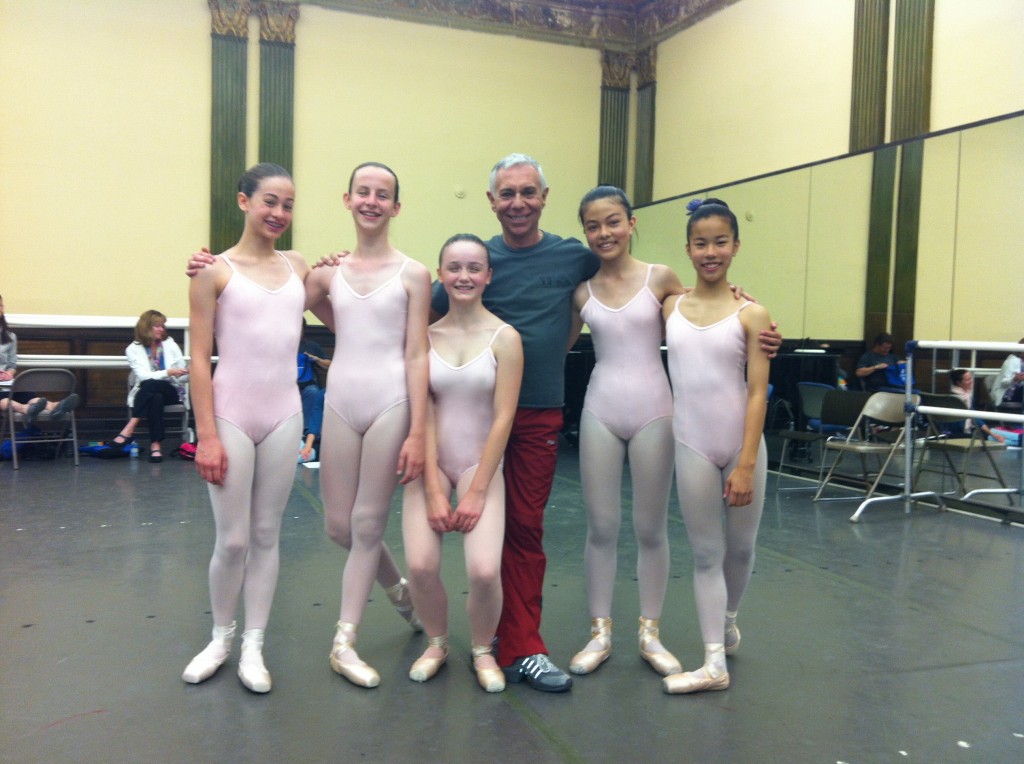4dancers has been following along with Dalia Rawson from Ballet San Jose as the school participates in American Ballet Theatre’s National Training Curriculum program. Today and tomorrow we’ll feature posts that reflect on the day-to-day experience of the teacher training portion…
(You can find the very first post in this series here if you’d like a little more background.)

by Dalia Rawson
Tuesday, May 29, 9:37PM: The Day Before
Tomorrow is the day. Teacher training at Ballet San Jose School for certification in the American Ballet Theatre National Training Curriculum finally will begin. Fifty-two people – about half dancers, faculty, and staff from Ballet San Jose, and half from the Bay Area, out of state, and even as far away as Japan – have signed up to take the first of three training courses necessary to become certified in all levels of the ABT National Training Curriculum. This course covers the Primary Classes and Levels 1, 2 and 3 of the Curriculum, and I can’t wait to get started, not only to learn the material, but to learn more about how the implementation of the Curriculum will benefit our student body.
I look forward to welcoming people early tomorrow morning into the 1920’s era building that is home to the Ballet SJ Studios here in downtown San Jose. I think we are ready. We have studios and pianists scheduled, and twenty student demonstrators confirmed, five for each of four days of demonstration classes. Franco De Vita, Raymond Lukens and Meaghan Love arrived earlier today from New York, and we showed them around the Ballet SJ Studios. It seemed we had everything they needed, and it looks as if we’re all ready to go!
I’m so excited that the training session is about to begin, and am finding it hard to calm down and get ready to bed. One final very girly question remains to be answered tonight: what on earth am I going to wear tomorrow?
Thursday, May 31, 9:23PM: After Day One
What a day! So many excited instructors arrived, filling our hallways and lobby as they registered. We each received an enormous binder with the curriculum guidelines, illustrated glossaries, and sections on health and development. After welcoming us to the program, Raymond introduced himself and Franco, and then began a detailed discussion about the motivation behind creating a National Training Curriculum. It seems that the administration of American Ballet Theatre had scheduled a retreat to deal with the issue of dancers who were so stylistically specific that it became problematic. This was not only an artistic issue for the dancers who had trouble adapting to various choreographers, but became a physical liability, as learning new movement vocabularies was so foreign to these dancers that it was leading to injuries. Additionally, dancer health issues, such as younger and younger dancers developing serious injuries, and the dangers of over stretching were discussed. The idea was put forth that a National Training Curriculum should be developed, not only to benefit the 5% of people who have the natural potential to become professional ballet dancers, and to help them to safely develop solid technique and artistry, but to create a broader base of love, support and understanding of the art form, through healthy, safe, and appropriate training for people with all ranges of natural ability.
We dove right into the National Training Curriculum’s ten principles of classical ballet training, which broke down the concepts that ballet teachers need to be able to explain and pass on to their students into easy to understand and comprehensive categories, defining fundamental but sometimes vague terms such as “placement,” “posture,” and “turnout” clearly and specifically. Ballet terminology was addressed, and the need for a standard naming of steps was explained. Considering the international nature ballet training, and the wide range of names for each step that are in common use, it is easy to appreciate the need for standardized glossary. [Read more…]




